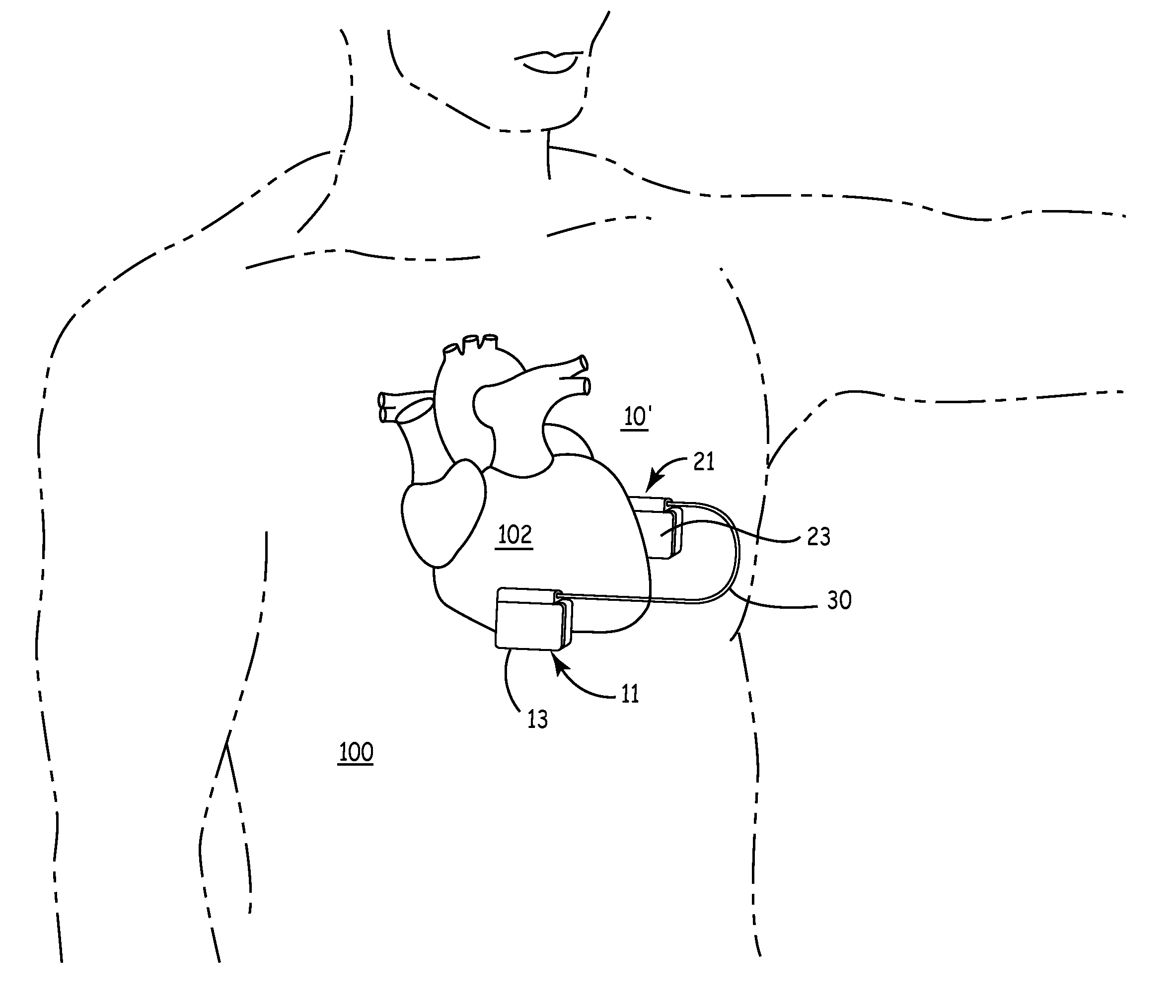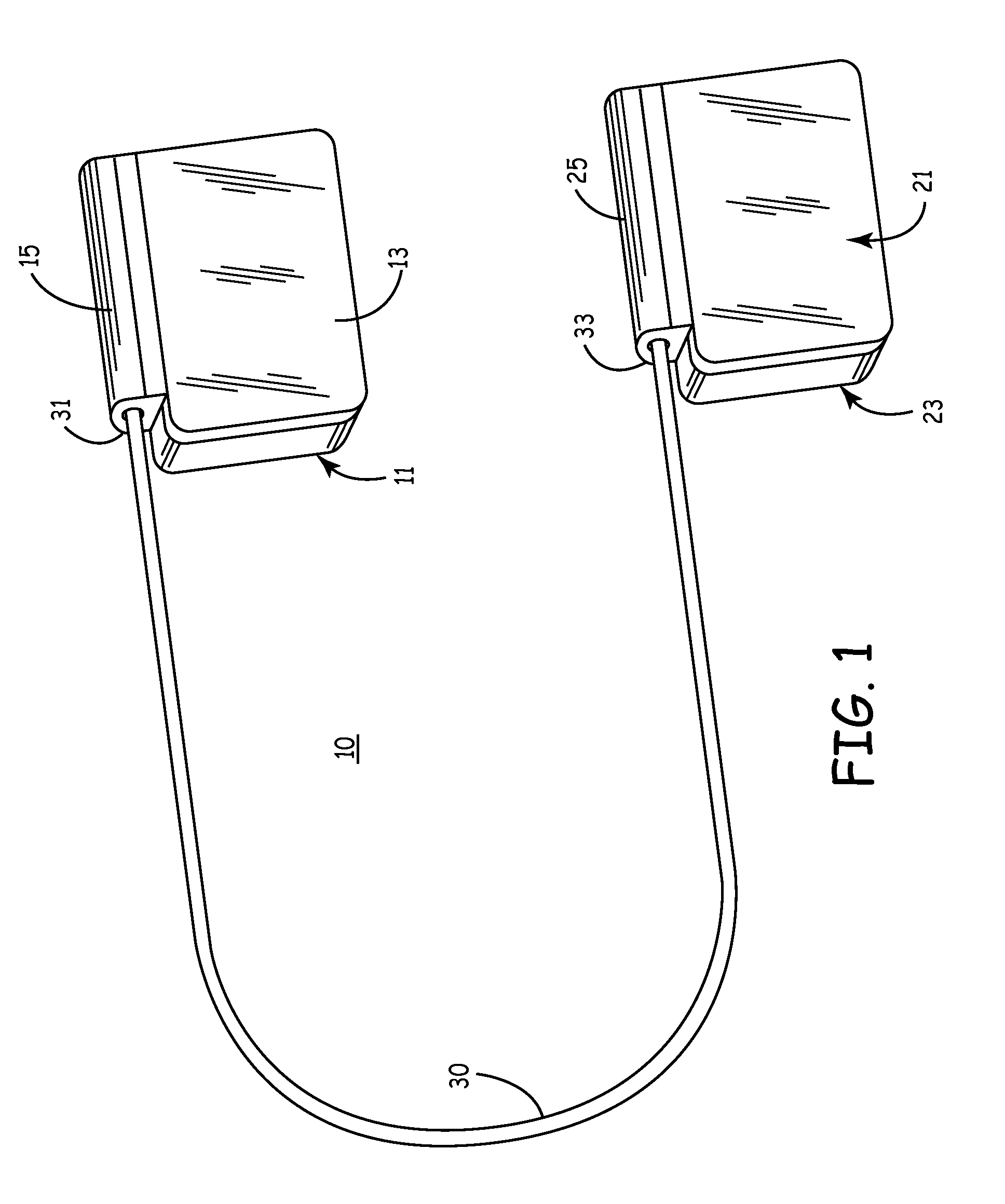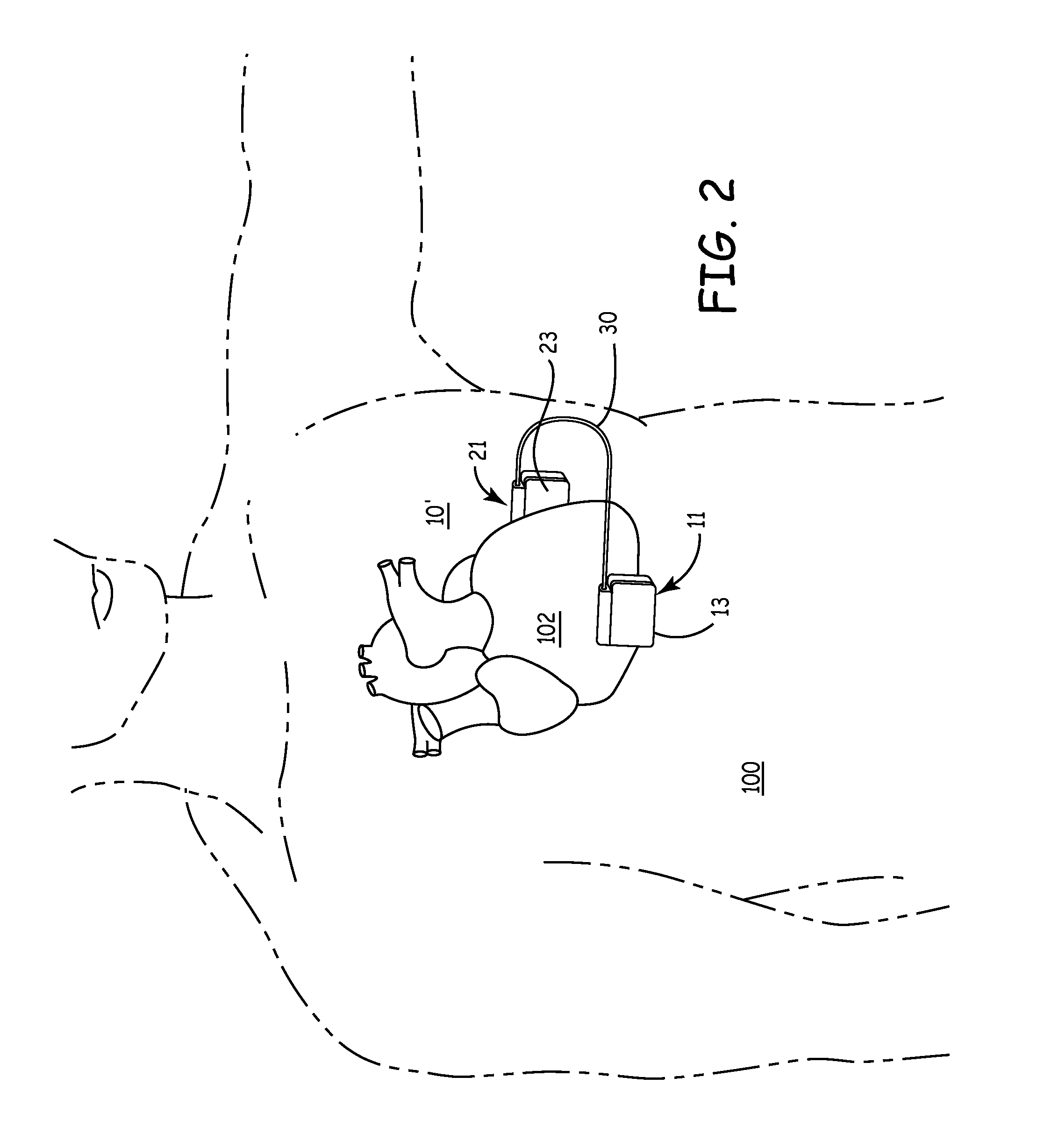Subcutaneous implantable cardioverter/defibrillator
a cardioverter and implantable technology, applied in the direction of heart stimulators, heart defibrillators, therapy, etc., can solve the problems of inability to realize such an arrangement using lead technologies available, the magnitude of cardioversion/defibrillation shocks may be such as to be extremely painful to the patient, and the pacing at these high energies is known to be painful, so as to achieve the effect of the number of available shocks, reducing the shock energy
- Summary
- Abstract
- Description
- Claims
- Application Information
AI Technical Summary
Benefits of technology
Problems solved by technology
Method used
Image
Examples
Embodiment Construction
[0052]The present invention enables the implantation of an ICD subcutaneously in a wide variety of patients without having to surgically invade the thoracic cavity. The ICD comprises first and second hermetically sealed housings or cans that each bear a cardioversion / defibrillation electrode and that are coupled together by a cable enabling implantation of the first and second housings on opposite sides of the chest and heart. The first and second hermetically sealed housings and the cable can take any convenient shape. Therefore the illustrated shapes of the preferred embodiments are merely exemplary and are not intended to be limiting in any sense.
[0053]FIG. 1 is a perspective illustration of a first embodiment of an ICD 10 in accordance with the present invention comprising first and second schematically depicted, hermetically sealed housings 11 and 21 tethered together by cable 30 and bearing first and second respective cardioversion / defibrillation electrodes 13 and 23 adapted t...
PUM
 Login to View More
Login to View More Abstract
Description
Claims
Application Information
 Login to View More
Login to View More - R&D
- Intellectual Property
- Life Sciences
- Materials
- Tech Scout
- Unparalleled Data Quality
- Higher Quality Content
- 60% Fewer Hallucinations
Browse by: Latest US Patents, China's latest patents, Technical Efficacy Thesaurus, Application Domain, Technology Topic, Popular Technical Reports.
© 2025 PatSnap. All rights reserved.Legal|Privacy policy|Modern Slavery Act Transparency Statement|Sitemap|About US| Contact US: help@patsnap.com



